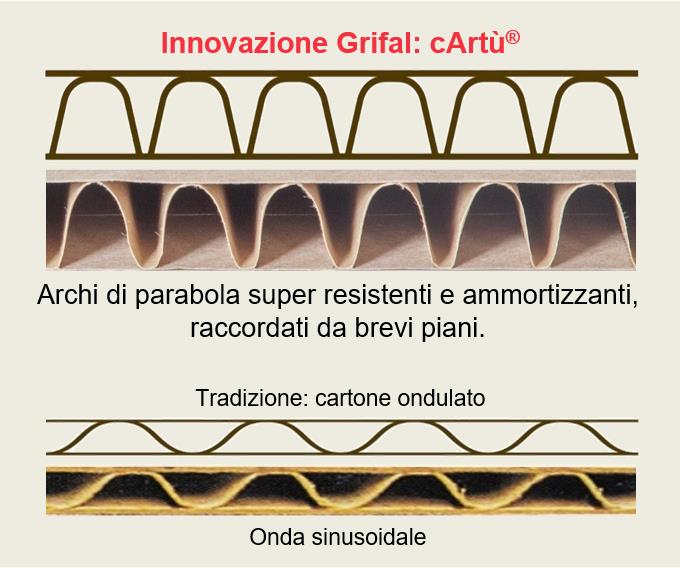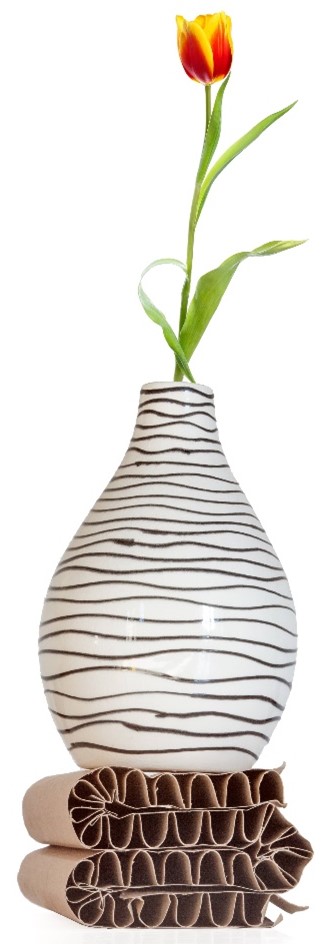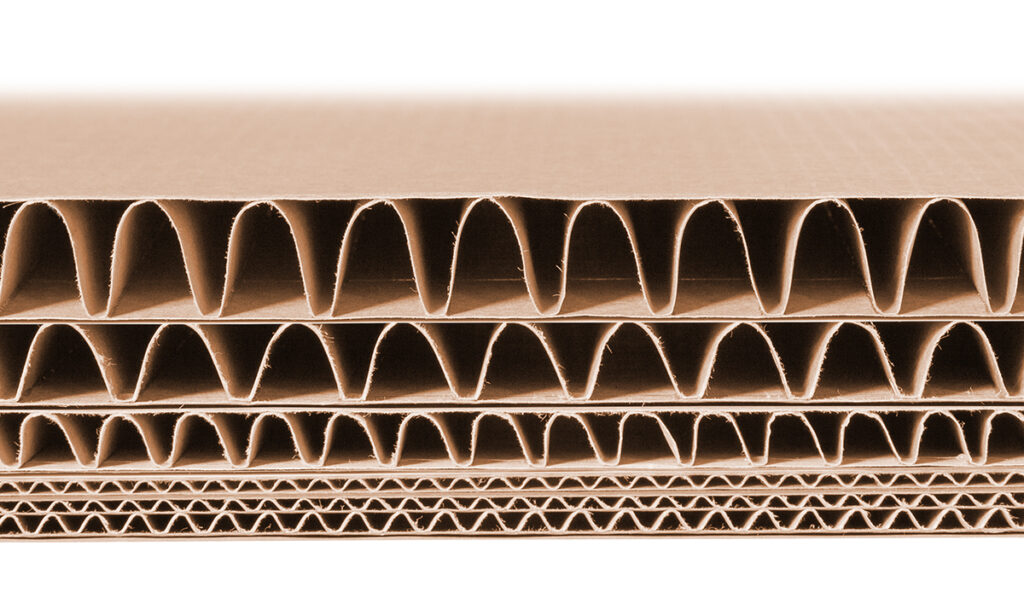Corrugated cardboard is the most widely used packaging material in the world. The exceptionalism of 2020, as unfortunately with so many other markets, has turned the tables on many research organizations and institutes. Until just before the pandemic, more or less rosy predictions had been made about the trend of raw materials, demand and supply of corrugated board at the Italian and international levels.
Despite the social and economic impact of Covid, which has been dramatic at times, B2C consumption has indeed shrunk (around -10%) but has not collapsed. Some sectors even recorded considerable numbers, such as ICT (+23.5 percent) and small household appliances (+9.5 percent). Also in Italy, the third quarter of 2020 alone, for example, showed a ‘rebound’ of +13 percent. These numbers, along with relevant growth drivers that we will now look at, place emphasis on the continuing “positive outlook” that we associate with the cArtù® product and market both locally and globally.
The orders of magnitude
The latest analysis confirms the growth of the corrugated board market in a range of +4% to +8% annually until 2025.
- In value, something like 260-280 billion euros.
- By volume, 1,800 million cubic meters of material.
Speaking of size, the image shows the comparison between the wave shape of cArtù and that of traditional corrugated cardboard. We return to the performance and aesthetic differences later in the article.

eCommerce
Among the main growth drivers for cArtù, the new corrugated board produced by Grifal, and for the corrugated board market as a whole, eCommerce cannot be missed. Online sales are increasing worldwide, as are the logistics and marketing needs associated with products and packaging.
Just to stay in the EU, the estimated annual growth of “digital shopping” is around +15 /+20% per year. Impressive is the increase in the propensity to purchase via the web in the 25-34 age group: up 79% in the last 10 years. These and other indicators strongly signal to us how the effect on demand for packaging, particularly corrugated board, will be largely positive. Net of intangible services, it is estimated that 80 percent of all products purchased online involve a significant inducement for packaging materials as well as logistics.
Delivery to the consumer generates up to 20 times more operations on packaging than traditional retail. Think of repeated storage, handling and transportation cycles on different intermodal systems. It is easy to see how the importance of secondary packaging increases as a result.
– you might be interested in: the Testing and Certification Laboratory for Packaging and eCommerce by Grifal.
Transformation and sustainability

Corrugated cardboard is easier than other materials to laminate and process. For example in – e.g. in boxes, containers and displays. Nonetheless, it is much more environmentally friendly than all packaging plastics such as bubble film and foams.
Indeed, plastic substitution is an issue that can shift social, political and environmental sensitivities. So-called green packaging is on a vertical ascent:
- Increased awareness by Consumer: circular economy, waste reduction.
- National and supranational governmental commitments: increasingly stringent taxation and regulation, promotion of sustainable consumption practices.
- Renewable and certified sources, lower energy consumption in the production process.
These are the cornerstones around which cArtù®, the special corrugated cardboard that saves up to 80 percent ofCO2 emissions compared to traditional packaging materials and up to 70 percent of paper compared to classic corrugated cardboard, was designed and is produced. Attention to the internets: separation of products, filling empty spaces in boxes and containers–a volume of use cases not to be underestimated.
Changes related to retail sales
Stores and retailers are increasingly looking for quick and easy solutions to decrease the complexity of packaging. We refer, for example, to the time it takes to handle, handle and recycle packaging, which should not become a disproportionate cost for those whose job it is to deal more with the marketing of products.
Retail-ready packaging has emerged as an important cost saver for distribution. This continued pressure on profits is providing an impetus to use more ready-to-sell formats as a solution to improve operational efficiency, as it is estimated that paper and paperboard secondary packaging formats can reduce shelf replenishment and handling times by up to 50 percent.
Industry giants such as Aldi in Europe and Walmart in the United States are highly appreciating these “secondary packaging” solutions, which can also improve the aesthetics and presentation of products within physical retail spaces.
Larger corrugated boxes will still be used to ship goods between logistics centers and warehouses, but they need not be retail-ready formats. This type of container can also be made of cArtù®, which can absorb shock, vibration and compression.
– you might be interested in: Consumer preference for green packaging drives retail sales
Digital Printing and Marketing
Not just functionality: secondary packaging is increasingly a vehicle for communication. The synergy between printing and corrugated board creates growing opportunities such as product customizations, higher quality of materials, and wow effect for business and consumer customers.
Digital printing is a highly evolved industry: corrugated manufacturers are showing increasing interest in implementing synergistic processes to meet the demands of growing volumes and demanding customers.
The flexibility of runs, the savings in installation costs, the ability to customize in relation to brands, regions, chain stores, or “clusters” of individuals, and the level of quality now available through the latest technologies combine to create a perfect storm of growth opportunities for manufacturers, processors and printers.
Companies see packaging as an increasingly important component in creating a memorable shopping and “unboxing” experience, one that end customers will want to share with their friends. A virtuous mechanism that can boost sales and intrigue new customers.
During 2021, Grifal will implement the much-anticipated first cArtù® 4.0 production line with integrated digital printing that will be installed in Cologno al Serio (BG) to replace the already broken-in line, which will be repositioned in Timisoara to serve some large customers already active in Romania.
cArtù®: corrugated cardboard has grown!
cArtù® is the special corrugated cardboard that comes from the new Grifal technology applied to the corrugating unit, with which it is possible to make waves 10 to 20 mm high
The shape and structure of the new wave enables superior performance, unattainable by traditional corrugated board, in terms of:
In addition to variable wave height, the desired degree of flexibility, roll-up or stiffness can be achieved with cArtù® through:
- wave frequency: at the same height, compared with traditional cardboard, cArtù®
- Increases the number of waves by 50%;
- variable wave pitch, in a unique combination with the lightness of usable papers.
cArtù® is also special because it allows you to:
- offer special processing, such as canneté;
- laminate with other materials, such as fabrics, reclaimed leather, aluminum–for truly unique functional and aesthetic combinations.
- respond to a very wide range of applications, see water-repellent cArtù®, scratch-resistant, adhesive, thermal, reflective…

